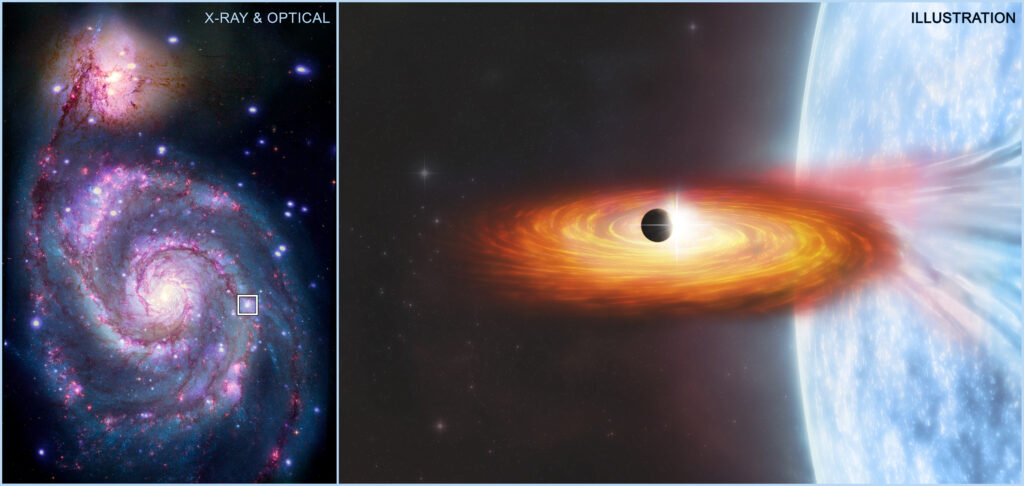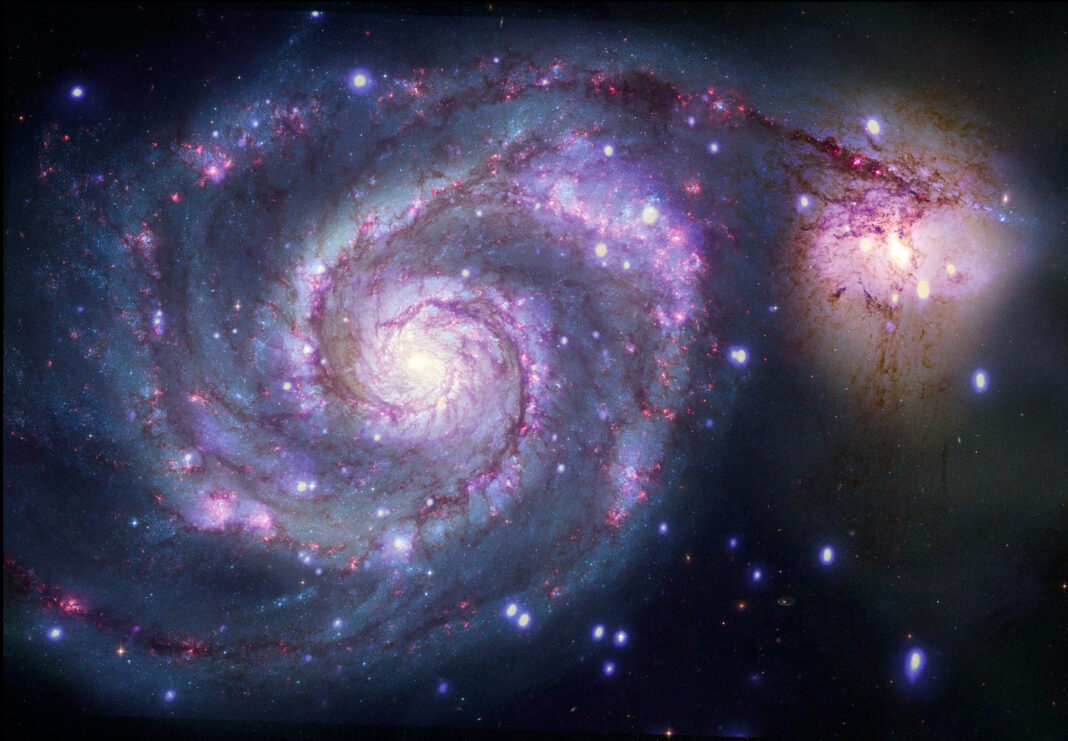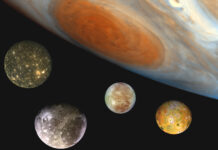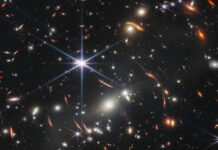In 1923, Edwin Hubble made an astonishing discovery: the Milky Way does not encompass the whole universe. After many autumn nights, aiming the Hooker telescope —the biggest telescope at the time— at the spiral-shaped nebula Andromeda, he realized he was observing another galaxy.
Thanks to modern astronomy, now we know that the universe is filled with hundreds of billions of galaxies. However, Edwin Hubble’s first observation was crucial to changing our view of the universe and ourselves forever.
Up to now, astronomers have confirmed over 4500 exoplanets, all of them in our galaxy; and they keep expanding the catalog as you read this article. And of course, It would be a lack of imagination not to picture those other galaxies loaded with planetary systems. After all, those galaxies look—and they should—the same as ours.
However, science works with experiments and observations: researchers strive for hard evidence.
Catching the shadow of a planet in another galaxy
A group of scientists led by Rosanne Di Stefano and Vinay L. Kashyap from the Harvard-Smithsonian Center for Astrophysics claimed they may have spotted an exoplanet in another galaxy. This new far, far away world is an orbiting binary system in the Whirlpool Galaxy, also known as Messier 51 —located around 26 million light-years away in the direction of the Canes Venatici constellation, near the Big Dipper.
The scientists named the new planet M51-ULS-1b, which stands for: The first planet orbiting an Ultra Luminous Source in the Messier 51. The star, which is, in reality, a supermassive two-star system (or binary system) was named: M51-ULS-1.
But how do astronomers observe exoplanets in our galaxy? Here, I show the main methods.
Transit
If you are reading this story, you probably like astronomy. You have been excited about the transit of Venus or Mercury in front of the Sun. When those planets pass between the Sun and us, they look like a dark spot crossing the Sun. Astronomers can also see the transit of exoplanets in front of their host star. In that case, it is not possible to see the tiny spot. Still, astronomers can perceive a light momentarily diminish from the star. 3261 exoplanets have been spotted this way so far.
Radial velocity
Planets’ gravity makes their host star wobble. We can’t see those planets because they are too faint and too small. Still, the shaking star produces variations in the colors of the light astronomers observe. 820 exoplanets have been discovered this way.
Gravitational lensing
Although only 93 have been discovered with this technique, this is my favorite.
From general relativity, we know that a massive object bends light. When a star, a giant planet, and the observer are in the same line, the giant planet acts as a magnifying lens, focusing the light emitted by the star, glowing for an instant.
A new method: the X-rays transit
Traditional methods are not good enough to “unambiguously identify” exoplanets in distant galaxies. From afar, galaxies look like very bright patches, which hinders the study of individual stars. The only hope is using the host galaxy sources of X-rays as lanterns that planets could eclipse. Binary ultra massive systems —where one of the stars is fast-growing, like M51-ULS-1— usually expel all kinds of radiation; they are powerful X-ray sources.
Di Stefano and collaborators used data from the X-ray space observatory Chandra taken from 2000 to 2018. The Earth’s atmosphere is an X-ray shield, making X-ray astronomy a bit tricky. For this reason, Chandra is an orbiting observatory designed to capture the X-rays coming from supernovae, clusters of galaxies, matter surrounding black holes, and ultra massive binary systems.

The extragalactic exoplanet candidate
The astronomers of the new study estimate that the M51-ULS-1 system must be around ten times heavier than our Sun. M51-ULS-1 is an X-rays lantern, roughly a million times brighter only in the X-rays range than our Sun in the entire light spectrum.
In their paper, they claim to have evidence suggesting that M51-ULS-1 is a young system where one of the stars is a black hole or neutron star and that the star donor is a blue supergiant. They argue that the detected exoplanet is likely to be almost the size of Saturn, moving in an orbit twice as large as Saturn from the Sun. This large orbit means astronomers would need to wait decades before the next transit to verify its extragalactic nature. These results were published this week in Nature Astronomy.
Did Di Stefano and collaborators really find an extragalactic planet? More observations and scientific results are needed.
We should stay vigilant: encountering a new world—the one that starts a catalog—is a big step for humankind to understand the universe and ourselves.
References
- Di Stefano, R., Berndtsson, J., Urquhart, R., Soria, R., Kashyap, V. L., Carmichael, T. W., and Imara, N. (2021). A possible planet candidate in an external galaxy detected through X-ray transit. Nature Astronomy.
- Hubble, E. P. (1929). A spiral nebula as a stellar system, Messier 31.Astrophysical Journal, 69, 103-158. DOI:10.1086/143167. The article can be retrieved here: http://articles.adsabs.harvard.edu/full/1929ApJ….69..103H.



